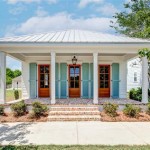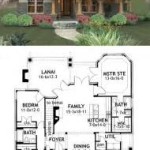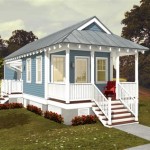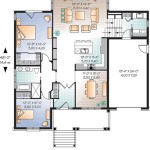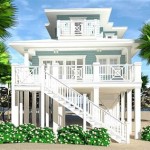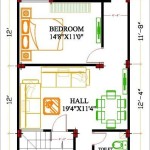Build A Cozy Home For Squirrels: Free Plans for Squirrel Houses
Squirrels, those energetic and bushy-tailed creatures, are a common sight in many residential areas. While they can be entertaining to watch as they scamper through trees and bury nuts, they can also become a nuisance if they decide to take up residence in attics or gardens. Providing a dedicated squirrel house can be an effective and humane way to manage squirrel populations and protect property. This article provides comprehensive information on building a cozy home for squirrels, including free plans and considerations for design and placement.
A well-designed squirrel house offers a safe haven from predators, harsh weather conditions, and other environmental stressors. It provides a secure location for nesting, raising young, and storing food. By offering an alternative to human dwellings, a squirrel house encourages squirrels to establish their territories in appropriate locations, reducing the likelihood of them causing damage to homes or gardens. Furthermore, creating a squirrel house contributes to the overall biodiversity and ecological balance of the local environment by supporting the population of these important seed dispersers.
Before embarking on the construction process, it is crucial to understand the basic requirements for a functional and attractive squirrel house. The size, shape, and materials used will all impact the house's usability and longevity. Consideration should also be given to the specific needs and preferences of the local squirrel species. For example, gray squirrels, which are common in many parts of North America, have different nesting habits than red squirrels. Understanding these nuances will ensure that the squirrel house is both appealing and beneficial to its intended inhabitants.
Key Considerations Before Construction
Several factors need careful consideration before construction begins. These include the size and design of the house, the selection of appropriate materials, and the planned location for installation. Each of these elements plays a crucial role in determining the overall success and effectiveness of the squirrel house.
Size and Design: The ideal size of a squirrel house depends on the species of squirrel in the area. Generally, an interior space of at least 12 inches by 12 inches by 18 inches high is sufficient for most common squirrel species. The entrance hole should be between 3 and 4 inches in diameter, large enough for a squirrel to enter comfortably but small enough to deter larger predators. A hinged roof or side panel allows for easy cleaning and maintenance. The addition of a small porch or landing platform in front of the entrance hole can provide squirrels with a convenient spot to perch and survey their surroundings.
The design should also incorporate drainage holes in the bottom of the house to prevent water from accumulating and creating a damp or unhealthy environment. Ventilation holes near the top of the house help to regulate temperature and prevent condensation. Avoid sharp edges or protruding nails that could injure the squirrels. A rough interior surface, or the addition of wood shavings or straw, can provide insulation and nesting material.
Material Selection: The materials used to build a squirrel house should be durable, weather-resistant, and safe for squirrels. Untreated lumber, such as cedar or pine, is a good choice. These woods are naturally resistant to decay and insects, and they do not contain harmful chemicals that could harm the squirrels. Plywood can also be used, but it should be exterior-grade and treated with a non-toxic sealant to protect it from moisture. Avoid using pressure-treated wood, as it contains chemicals that can be harmful to squirrels.
Metal roofing or flashing can be used to protect the roof from the elements and extend the lifespan of the house. However, avoid using metal on the interior of the house, as it can become too hot in direct sunlight and too cold in winter. Fasteners, such as screws and nails, should be rust-resistant to prevent corrosion. Consider using screws rather than nails, as they provide a stronger and more secure connection.
Location, Location, Location: The location of the squirrel house is critical to its success. Squirrels prefer to nest in elevated locations, away from ground-level predators. Mount the squirrel house at least 10 to 15 feet above the ground, ideally in a tree with branches that provide easy access. Choose a location that is sheltered from strong winds and direct sunlight. A north- or east-facing location is generally preferred, as it provides shade during the hottest part of the day.
Consider the proximity of food sources, such as nut trees or bird feeders, when selecting a location. Squirrels are more likely to use a house that is located near their preferred food sources. However, avoid placing the house too close to bird feeders, as this can create competition between squirrels and birds. It is also important to ensure that the location is accessible for maintenance and cleaning. Avoid placing the house in a location that is difficult to reach or that poses a safety hazard.
Free Squirrel House Plans: A Step-by-Step Guide
Numerous free plans are available online for building squirrel houses. These plans typically include detailed instructions, material lists, and diagrams. Adapting these plans to suit individual needs and preferences is encouraged. Below is a general outline of the steps involved in building a basic squirrel house:
Step 1: Gather Materials: Based on the chosen plan, gather all necessary materials, including lumber, fasteners, and any optional features such as roofing or insulation. Ensure that all materials are clean, dry, and free of splinters or sharp edges.
Step 2: Cut the Lumber: Using a saw, cut the lumber to the dimensions specified in the plan. Accurate measurements are essential for ensuring that the pieces fit together properly. Label each piece to avoid confusion during assembly.
Step 3: Assemble the Walls: Assemble the walls of the squirrel house by attaching the lumber pieces together with screws or nails. Ensure that the walls are square and aligned properly. Use a level to check for plumbness.
Step 4: Cut the Entrance Hole: Using a hole saw or jigsaw, cut the entrance hole in one of the walls. The diameter of the hole should be between 3 and 4 inches. Smooth the edges of the hole to prevent splinters.
Step 5: Attach the Floor and Roof: Attach the floor to the bottom of the walls, ensuring that it is securely fastened. Attach the roof to the top of the walls, using hinges if desired for easy access. Overhang the roof slightly to protect the entrance hole from rain.
Step 6: Add Drainage and Ventilation Holes: Drill drainage holes in the bottom of the house and ventilation holes near the top. The diameter of the holes should be approximately ¼ inch.
Step 7: Finish and Protect: If desired, apply a non-toxic sealant or stain to the exterior of the house to protect it from the elements. Allow the sealant or stain to dry completely before mounting the house.
Maintaining and Enhancing Your Squirrel House
Once the squirrel house is built and installed, regular maintenance is essential to ensure its longevity and effectiveness. Cleaning the house annually, typically in late winter or early spring before the nesting season begins, is crucial. Remove any old nesting material, debris, and accumulated droppings. Use a brush or scraper to clean the interior surfaces of the house. Inspect the house for any damage, such as loose fasteners or rotting wood, and make necessary repairs.
In addition to regular cleaning, consider providing additional nesting material, such as dried leaves, straw, or shredded paper, to encourage squirrels to use the house. Place the nesting material inside the house or nearby, allowing the squirrels to carry it in themselves. Observe the squirrel house regularly to monitor its use and identify any potential problems. Look for signs of squirrel activity, such as nesting material being carried into the house or squirrels entering and exiting the house frequently.
Enhancements can be made to the squirrel house to improve its attractiveness and functionality. Adding a small porch or landing platform in front of the entrance hole can provide squirrels with a convenient spot to perch and survey their surroundings. Installing a predator guard, such as a metal cone or baffle, can help to deter predators from accessing the house. Providing a source of water near the squirrel house, such as a bird bath or shallow dish, can also be beneficial, especially during dry periods.
Providing supplementary food, such as nuts or seeds, can encourage squirrels to use the house and establish their territories nearby. However, avoid providing excessive amounts of food, as this can lead to overpopulation and dependence. A balanced approach, focusing on providing a safe and comfortable nesting environment, is the most effective way to attract and support local squirrel populations. By following these guidelines, you can build a cozy and functional home for squirrels that will provide them with a safe haven for years to come.

Building A Squirrel House Plaster Disaster

Squirrel Box Plans

Squirrel House Instructional By Krtter Kribs Youtube

Squirrel House Build It Yourself Kit Etsy

Esschert Design Squirrel House

Making Your Own Squirrel House Nest Box Construction Drawing Arvilla

Making Your Own Squirrel House Nest Box Construction Drawing Arvilla

Building A Squirrel House Plaster Disaster

Squirrel House Instructional By Krtter Kribs

Squirrel House Nesting Box Gray Predator Guard Wildlife Rehab Approved Easy Mount Etsy
Related Posts

